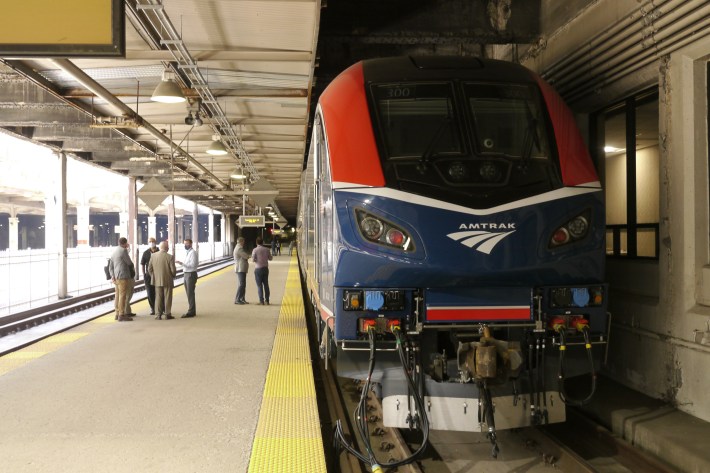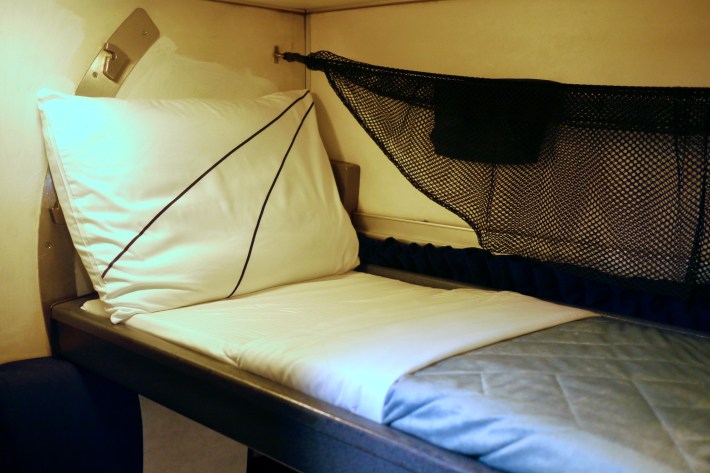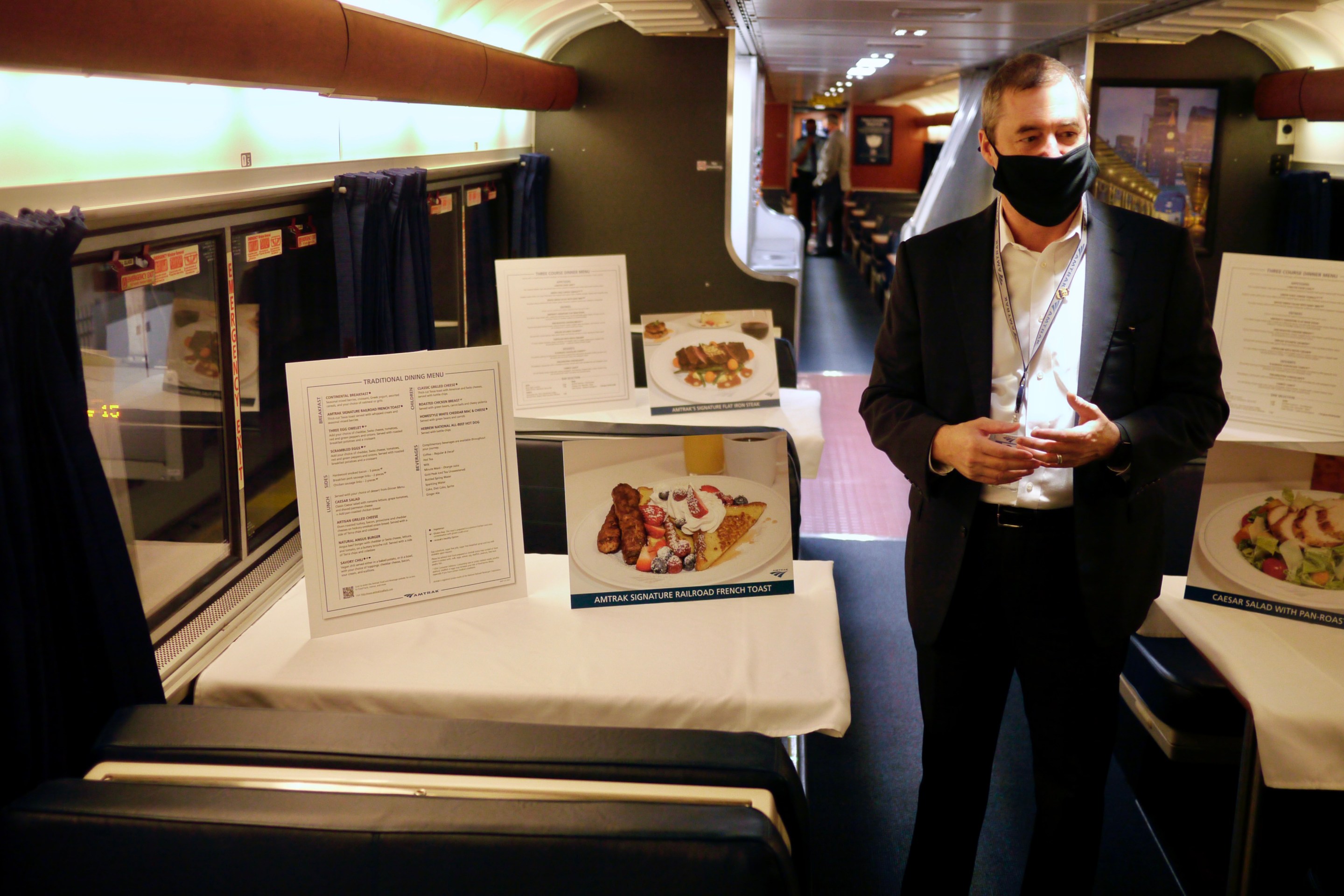Amtrak wants to make riding across the United States cheaper, more comfortable, and easier this year, as more and more people get vaccinated and it becomes safer to travel. To that end, the national passenger rail company has a heavily discounted national pass (that expires soon), new seat cushions and linens, and has restored daily service on some lines.
At a press event at Union Station on Tuesday, Amtrak executives showed off its first new locomotive and a partially refreshed long-distance train. The locomotive was tacked onto a modified California Zephyr train that arrived in Chicago on Monday for the event. Executives also highlighted the return of formal dining – abandoned during the pandemic to keep people from congregating – and the updated menu.
At the front of the train, the new locomotives are quieter and significantly less polluting than the ones they'll be pushing out. An Amtrak staffer said that the ALC-42, manufactured by Siemens in Sacramento, emits 97 percent less particulate matter and 95 percent less nitrogen oxides.
The ALC-42 locomotives look just like the ones that pull Amtrak trains across Illinois and Michigan and to Milwaukee. They're part of the same Siemens Charger family. The ones Amtrak will use for long-distance trains, however, have some minor changes including larger fuel tanks and a replaceable nose for when the trains collide with vehicles.

Inside the passenger coaches, Amtrak has replaced the carpet and curtains, and reupholstered the seats and replaced their cushions. The seat structure and layouts remain, but the new seat covers are easier to clean and have a more modern aesthetic. The same changes were made to the sightseeing car with panoramic windows. I would go so far as to say that the new seat cushion design is reminiscent of premium seats on some planes, which would make sense given that many of the current vice presidents at Amtrak recently worked for airlines.
In the bedrooms and roomettes, Amtrak has replaced the bedding with different fabrics and new patterns and colors. Additionally, passengers traveling in the bedrooms – which our tour guide Amtrak vice president of long-distance service Larry Chestler called the equivalent of first class – can use branded toiletries in refillable containers, part of an aim to reduce waste.

Moving on to the dining car, a vice president of customer experience guided my tour group through the breakfast, lunch, dinner, and dessert menus. Since my tour was at noon, I was hoping for samples. I looked at the menu of adult beverages and noticed a full complement of high-quality spirits but a lacking beer menu and commented that Amtrak should add more craft beers than the Stone Brewing IPA. The guide replied that they have to provide what customers demand and their number one seller is Stella Artois. (The other options were Bud Light, Corona, and Heineken.)
But Amtrak is bringing back formal dining for bedroom and roomette riders on Western routes, after nearly a year of providing prepackaged meals. Half of the seating will be for mixed parties and the other half for private parties. Eventually, Amtrak will allow the rest of the passengers to dine here. The east-west distinction was explained this way: The western routes are longer and sometimes have 10-13 meals so it was important to Amtrak to provide those meals in the traditional way.

Two other guests in my tour were congressional aides for Congresspersons Marie Newman and Jesus "Chuy" Garcia. With them in mind, I asked Chestler whether Amtrak's post-pandemic changes include giving the train operator better access to the tracks.
Since taking over railroads' passenger train responsibilities in 1971, Amtrak is supposed to get preference to use privately-owned tracks, but that doesn't always happen, leading to long delays. Chestler responded that they are establishing new performance standards and monitoring to track the delays but that it's up to Congress to adopt new regulations-with-teeth – my words – and the Surface Transportation Board to enforce them.
Amtrak issued a report card based on 2020 data, giving the six major "Class I" railroads an average grade of about "B+". The company creates scores based on the number of customers delayed rather than the number of trains delayed. In 2020, on the California Zephyr that brought the refreshed train to Chicago for the event, 60 percent of customers did not arrive at their destination within 15 minutes of the scheduled time (this is an increase from 2019, when only 33 percent of customers were late).
Finally, Amtrak wants to ensure people know that most long distance routes that were reduced to three times per week have had service restored back to one per day. And to make it easier and cheaper to ride, Amtrak has a promotional price for its national rail pass: the USA Rail Pass price is $299, down from $499, until June 22, while also making it possible to book and change pass trips online and in the Amtrak app.
So while the rolling stock is the same Amtrak intends to give the long distance train interiors a significant refresh, not seen in decades.





